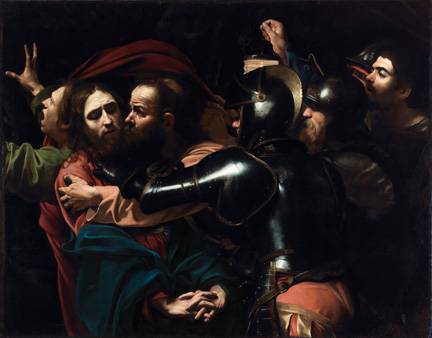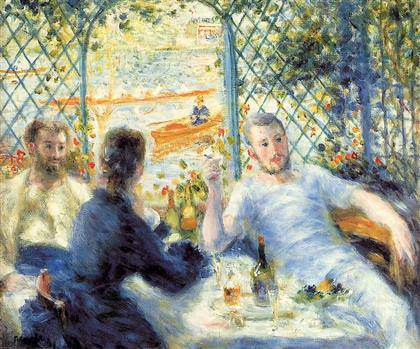
Michelangelo Merisi da Caravaggio, ‘The Taking of Christ’ (detail), 1602. On indefinite loan to the National Gallery of Ireland from the Jesuit Community, Leeson St., Dublin who acknowledge the kind generosity of the late Dr Marie Lea-Wilson.
Photo © The National Gallery of Ireland, Dublin
National Gallery London presents ‘Beyond Caravaggio’ ‘Beyond Caravaggio’ is the first major exhibition in the UK to explore the work of Caravaggio and his influence on the art of his contemporaries and followers. 12 October 2016 – 15 January 2017.]]>
Source: National Gallery London
Michelangelo Merisi da Caravaggio (1571–1610) is one of the most revolutionary figures in art. His strikingly original, emotionally charged paintings, with their intense naturalism, dramatic lighting and powerful storytelling, had a lasting impact on European art and the reverberations echo down to our own time.
Caravaggio did not have pupils or travel extensively, and he died at the relatively young age of 39, and yet his influence was widespread and astonishingly diverse. From 1600, artists from across Europe flocked to Rome to see his work, and many went on to imitate his naturalism and dramatic lighting effects – these included artists as talented and varied as Orazio Gentileschi, Valentin de Boulogne, Jusepe de Ribera and Gerrit van Honthorst. Paintings by Caravaggio and his followers were highly sought after in the decades following his death, but fell out of favour by the middle of the 17th century.
Caravaggio’s practice of painting from life and his use of chiaroscuro (strongly contrasted lighting effects) were quickly emulated, but artists did not simply replicate his style; taking Caravaggio’s works as their starting point, they responded to different aspects of his art and developed their own individual approaches. Giovanni Baglione’s ‘Ecstasy of Saint Francis’ (1601, The Art Institute of Chicago) is the first truly Caravaggesque painting by another artist; Orazio Gentileschi, who was a friend of Caravaggio’s, is represented by two very different works, whilst his immensely talented daughter, Artemisia, is present in the exhibition with ‘Susannah and the Elders’ (1622, The Burghley House Collection). ‘Christ displaying his Wounds’ (about 1625-35, Perth Museum and Art Gallery) by Giovanni Antonio Galli (called Lo Spadarino) is one of the most striking and memorable paintings in the show.
The show, which travels to the National Gallery of Ireland (Dublin) and the Scottish National Gallery (Edinburgh) in 2017, offers a unique opportunity to discover a number of hidden art treasures from around the British Isles. The majority of the 49 paintings in the exhibition come from museums, stately homes, castles, churches and private collections across Great Britain and Ireland. These paintings, many of which will be unfamiliar to visitors, will demonstrate how Caravaggio’s art came to inspire a whole generation of painters.
Related content
Thyssen-Bornemisza Museum presents the exhibition “Caravaggio and the Painters of the North” (exhibition, 2016)
Follow us on:

